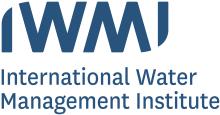Resource information
The Chinyanja Triangle (CT) is an area inside the Zambezi
River Basin, inhabited by Chinyanja-speaking people
sharing a similar history, language and culture across
the dryland systems of the eastern province of Zambia,
southern and central regions of Malawi and Tete Province
of Mozambique. Chiefs and Chiefdoms play a critical role
in decision making and influencing social relationships. The
Zambezi River, which originates in the Kalene Hills in Zambia
is joined by ten big tributaries from six countries, and is
the major source of surface water in the triangle before
emptying into the Indian Ocean. Dryland agriculture is the
predominant source of livelihoods for over 90% of the rural
population. This paper characterizes three distinct farming
subsystems across rainfall gradients, namely maize-beans-
fish, sorghum-millet-livestock and the livestock-dominated
subsystem. It presents the socioeconomic characteristics,
historical drivers of change, resources use and management
(water, land, forestry) and the institutional disincentives
affecting agricultural production and productivity in the
region. The paper also attempts to identify major drivers of
change, and inventorize key institutions in the region and
suggests improved institutional arrangements for improving
agricultural productivity, resilience and ecosystem health at
farm, landscape and basin scales.



